Signed into law in December 2022, the SECURE 2.0 Act continues to reshape retirement plans, focusing on increasing savings, expanding access, and simplifying administration. While many provisions took effect in 2023 and 2024, several key changes have occurred over the past year.
As 2025 reaches its midpoint, now is the time to verify that your retirement plans align with the latest regulations. Staying on track with compliance can help you avoid costly penalties and strengthen your benefits strategy, particularly as health care costs rise and employees increasingly prioritize financial wellness.
This guide outlines what is already in effect, what is coming next, and actionable steps to position your plan for success through the remainder of the year.
Key SECURE 2.0 Changes from 2023-2024
Over the past few years, SECURE 2.0 has introduced several impactful changes to retirement plans, with key updates from 2023 and 2024 now in effect and shaping plan options today.
Required Minimum Distribution Age Increase: In 2023, SECURE 2.0 raised the age for Required Minimum Distributions (plans) from 72 to 73, providing retirees with more time and flexibility to grow their savings before mandatory withdrawals.
Student Loan Matching Contributions: Effective in 2024, sponsors have the option to adopt plan provisions that enable employer matching contributions on student loan payments, treating them as if they were salary deferrals. Participants must annually certify to the employer that payment has been made on the loan, with contributions capped at the annual elective deferral limit under Section 402(g) ($23,000 for 2024, adjusted for inflation).
Pension-Linked Emergency Savings Accounts: Starting in 2024, Pension-Linked Emergency Savings Accounts (PLESAs) became available for plan sponsors to adopt as short-term savings accounts linked to workplace retirement plans. Employers can auto-enroll employees and set a savings cap of up to $2,500; employees can then withdraw these funds without incurring penalties for early retirement withdrawals.
Learn more in the DOL FAQs on PLESAs.
Penalty-Free Withdrawals for Victims of Domestic Abuse: As of 2024, plans allow participants to withdraw up to the lesser of $10,000 (indexed) or 50% of their vested balance, penalty-free, if they self-certify that they have experienced domestic abuse within the past year. This option also applies to IRAs, and adoption of this feature is optional for plan sponsors.
Retirement “Lost and Found” Database: To help participants and beneficiaries locate missing retirement benefits, the Department of Labor (DOL) launched a searchable “Lost and Found” database (ID verification through Login.gov is required).
With these provisions now in place, it’s important for plan sponsors to stay ahead of additional requirements that took place earlier this year.
SECURE 2.0 Provisions Effective in 2025
This year, new SECURE 2.0 provisions are now in effect, expanding retirement savings opportunities and introducing new compliance requirements for plan sponsors.
Mandatory Automatic Enrollment: Beginning January 1, 2025, most new 401(k) and 403(b) plans adopted after December 29, 2022, must include automatic enrollment. Initial deferral rates must range between 3% and 10% of the employees’ eligible compensation, increasing annually by at least 1%, until it reaches a minimum of 10%, but not exceeding 15%. Employees can opt out at any time.
According to Vanguard, automatic enrollment has been shown to increase participation rates by up to 50%. Employers should ensure that their systems and communications are ready to meet the mandate and maximize engagement. Exemptions apply to companies that have been in business for fewer than three years or have 10 or fewer employees.
Learn More about Automatic Enrollment 401(k) Plans from the U.S. Department of Labor.
Catch-up Contribution Changes: Proposed for 2025, employees ages 60-63 can make catch-up contributions up to the greater of $10,000 or 150% of the regular catch-up contribution limit (currently $7,500 for participants ages 50 and older). Also proposed, starting December 31, 2025, participants earning over $145,000 annually must direct catch-up contributions to designated Roth accounts, forgoing upfront tax deductions.
Employers should now update plan provisions, payroll systems, and employee education materials to support these enhanced Roth-only contributions.
Expanded Part-Time Employee Eligibility: Effective January 1, 2025, employees working at least 500 hours per year for two consecutive years must be eligible to make elective deferrals in 401(k) and ERISA-covered 403(b) plans. This reduces the prior three-year threshold. Employers should begin tracking hours and updating eligibility rules now, particularly in industries such as health care, hospitality, and retail, where part-time labor is a common practice. This change promotes retirement equity and may improve employee retention.
Employers should take steps now to ensure these changes are implemented to meet compliance and support employees’ retirement goals.
Looking Ahead: 2026 and Beyond
Beginning in 2026, SECURE 2.0 will allow retirement plans to permit participants to take distributions of up to $2,500 annually (adjusted for inflation) to pay premiums for specific long-term care insurance contracts. These taxable distributions are exempt from the 10% early withdrawal penalty. Plan sponsors should evaluate whether to amend plans to include this option and begin communicating these upcoming benefits to employees.
Actionable Steps for the Second Half of 2025
SECURE 2.0’s changes allow sponsors to meet workforce needs, avoid significant penalties, and build employee trust and loyalty. Aligning plans with SECURE 2.0 can reduce turnover and position employers as leaders in benefits in a tight labor market, where retirement benefits significantly influence job choices for candidates.
Actionable steps for Plan Sponsors include:
- Auditing Your Plan: Review 401(k) and 403(b) plans for automatic enrollment compliance.
- Updating Systems: Ensure payroll and recordkeeping systems support 2025 catch-up contributions and part-time eligibility.
- Communicating Benefits: Educate employees on auto-enrollment and catch-up options to boost engagement.
- Leveraging Expertise: Collaborate with benefits advisors to optimize plan participation and compliance through features like auto-enrollment.
Staying ahead of these future updates will position your plan—and your employees—for long-term success. To explore how your organization can strengthen its employee benefits strategy to stay ahead, contact us or reach out to a Grassi advisor today.

